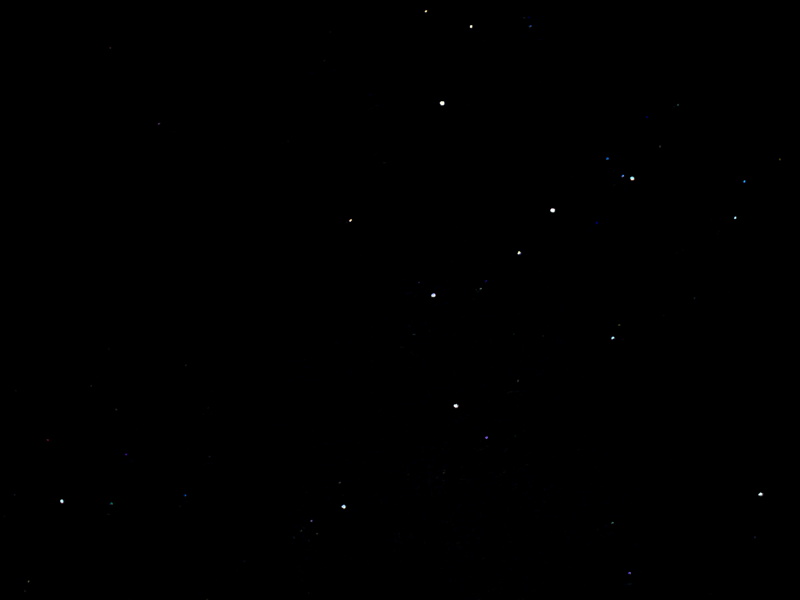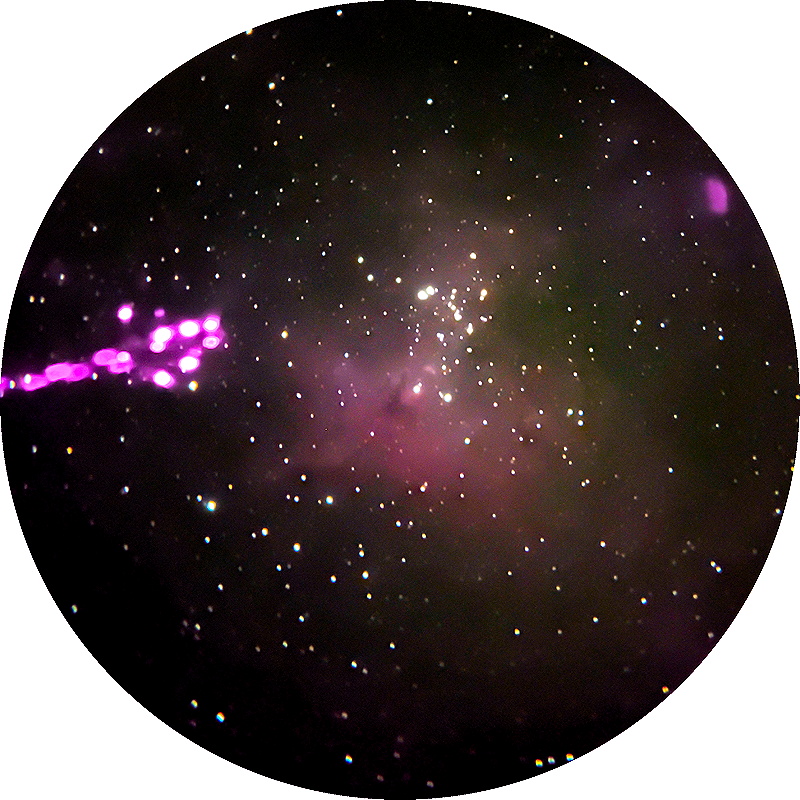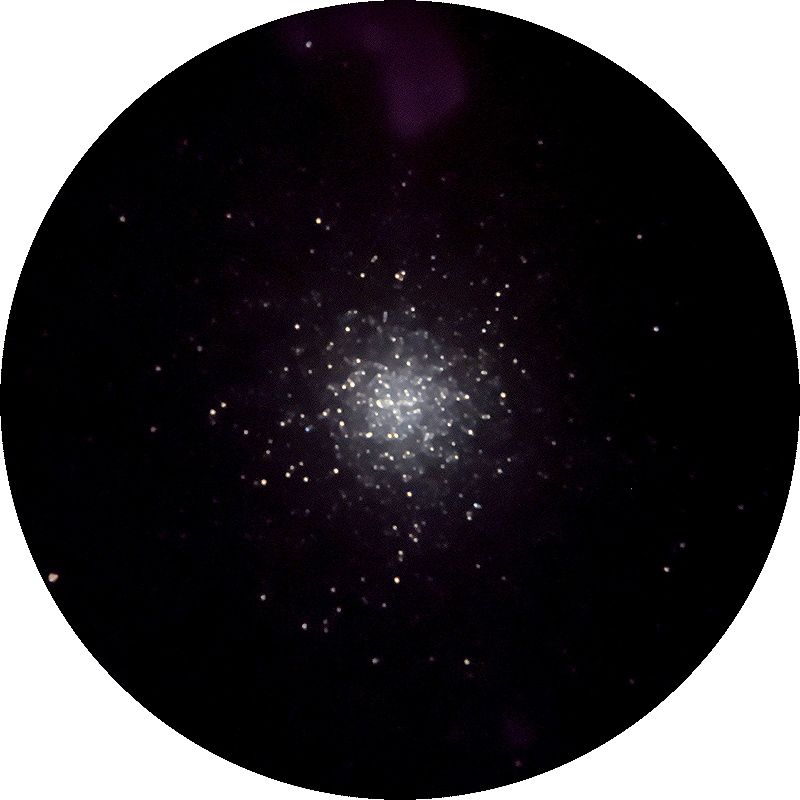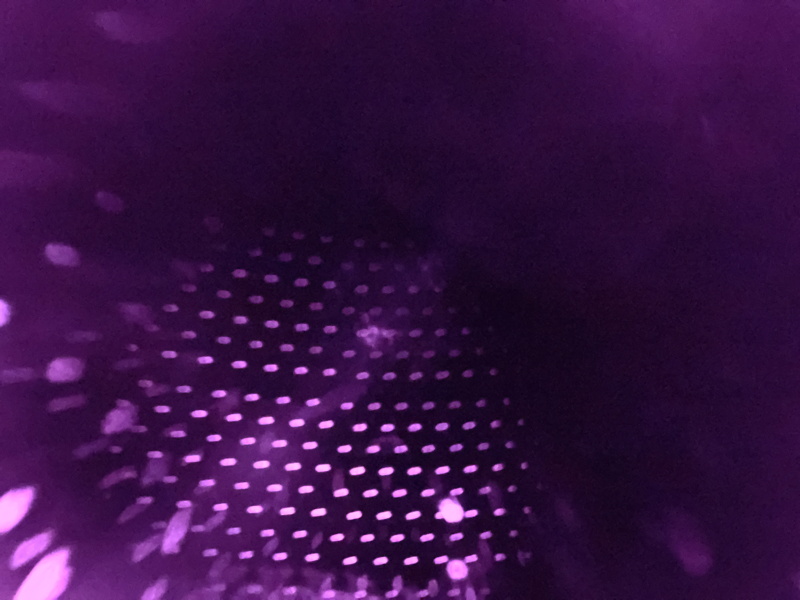Initial iPhone 13 Pro Max Astrophotography
Posted: 26 October 2021
Saturday, 23 October 2021, was cloudy. Cloudy skies continued until Monday, 25 October.
|
Open: Monday, 25 October 2021, 1808 MST Temperature: 73°F |
Session: 1681 Conditions: Clear |
Equipment:
12" f/8 LX600 w/StarLock
2" 24mm UWA eyepiece
1.25" 15mm eyepiece
2" 30mm eyepiece
Camera:
iPhone 13 Pro Max
SYNCed the observatory clock to WWV time signals.
1815 MST: LX600 ON, StarLock OFF, High Precision OFF.
Viewed Venus, Saturn, and Jupiter, 102X.
1823 MST: Wi-Fi Adapter ON.
Tested the iOS app ScopeBoss with my new iPhone 13 Pro Max that I received this day. Worked fine.
1826 MST: Wi-Fi OFF.
Viewed M22 (globular cluster), 102X.
Relaxed on the observatory patio bench while waiting for the sky to get darker. It began getting breezy. I did some handheld night sky astrophotography with the new iPhone 13 Pro Max using the Apple Camera app to test its capabilities.
Cassiopeia over Cassiopeia Observatory (Night Mode, 3 seconds, 1X lens)

Cassiopeia (Night Mode, 3 seconds, 3X lens)

Andromeda with Andromeda Galaxy (Night Mode, 10 seconds, 3X lens)

Milky Way (Night Mode, 10 seconds, 1X lens)

Back inside the observatory, I mounted the iPhone 13 Pro Max on a 1.25" 15mm eyepiece and a 2" 30mm eyepiece using the Levenhuk Smartphone Adapter.
1922 MST: StarLock ON.
I began imaging some Deep Sky Objects using the iOS app NightCap Camera. I discovered that the LiDAR sensor red lights on the iPhone 13 Pro Max were being reflected from the front glass surface of the eyepiece, ruining what would otherwise have been impressive images. There does not seem to be a way to turn off the LiDAR sensor, so I'll have to find a good way to cover the sensor. (I hope to report more on this on the next update.) The iPhone 13 Pro Max has an amazing camera for afocal astrophotography, as seen in these StarLock autoguided images. It can go to ISO 32,000 using NightCap Camera. The LiDAR lights show very clearly in several of the images.
M22 Globular Cluster, afocal 163X (Long Exposure, Light Boost, ISO 32000, 1sec, 1 minute, 1X lens)

M16 Eagle Nebula, afocal 81X (Long Exposure, Light Boost, ISO 32000, 1sec, 1 minute, 1X lens)

M17 Swan Nebula, afocal 81X (Long Exposure, Light Boost, ISO 32000, 1sec, 1 minute, 1X lens)

M11 Wild Duck Cluster, afocal 81X (Long Exposure, Light Boost, ISO 16000, 1sec, 1 minute, 1X lens)

M13 Great Hercules Globular Cluster, afocal 163X (Long Exposure, Light Boost, ISO 16000, 1sec, 1 minute, 1X lens)

M57 Ring Nebula, afocal 163X (Long Exposure, Light Boost, ISO 32000, 1sec, 1 minute, 1X lens)

2038 MST: StarLock OFF.
I will be updating my iPhone Messier Catalog Astrophotography Album with photos taken with the iPhone 13 Pro Max.
This photo shows the LiDAR lights being reflected by the eyepiece. The 1X camera lens was offset slightly from the eyepiece to get the image.

Viewed M57 (Ring Nebula), 163X and 102X.
It was now getting windy. The eastern sky was brightening from the rising waning gibbous Moon. I decided to end the session.
2049 MST: LX600 OFF.
2106 MST: Dome Cover ON (rain in the forecast for the next day).
|
Close: Monday, 25 October 2021, 2108 MST Temperature: 66°F |
Session Length: 3h 00m Conditions: Clear, windy |
Comments are welcome using Email. Twitter users can use the button below to tweet this report to their followers. Thanks.
Cassiopeia Observatory Home Page
Copyright ©2021 Michael L. Weasner / mweasner@me.com
URL = http://www.weasner.com/co/Reports/2021/10/26/index.html
